
A streetcar runs through the city of Sakai, home to Japan’s oldest wooden Western-style lighthouse and machiya town houses designated as Important Cultural Properties or Registered Tangible Cultural Properties. The air is somehow nostalgic, and time flows slowly on the streets of Sakai. Although often considered a suburb of Osaka, Sakai is an intriguing city with its own unique history and world-class technology. The more you learn about it, the more you want to visit many times over.
Sakai: A “Border” Town
Sakai frequently appears in the history of Japan. The nation’s largest “keyhole-shaped” tumulus was built in Sakai, the city flourished as an autonomous entity during the Middle Ages, and Sakai’s firearm manufacturing supported the Sengoku Period. Situated near the sea and at the border of Settsu and Izumi Provinces, Sakai’s continuous development is closely associated with its geographic location. The city established itself early as a hub for domestic trade when it served as the outer port of Nara, an ancient capital of Japan. Remnants of Sakai’s vibrant history can be felt throughout the city today.
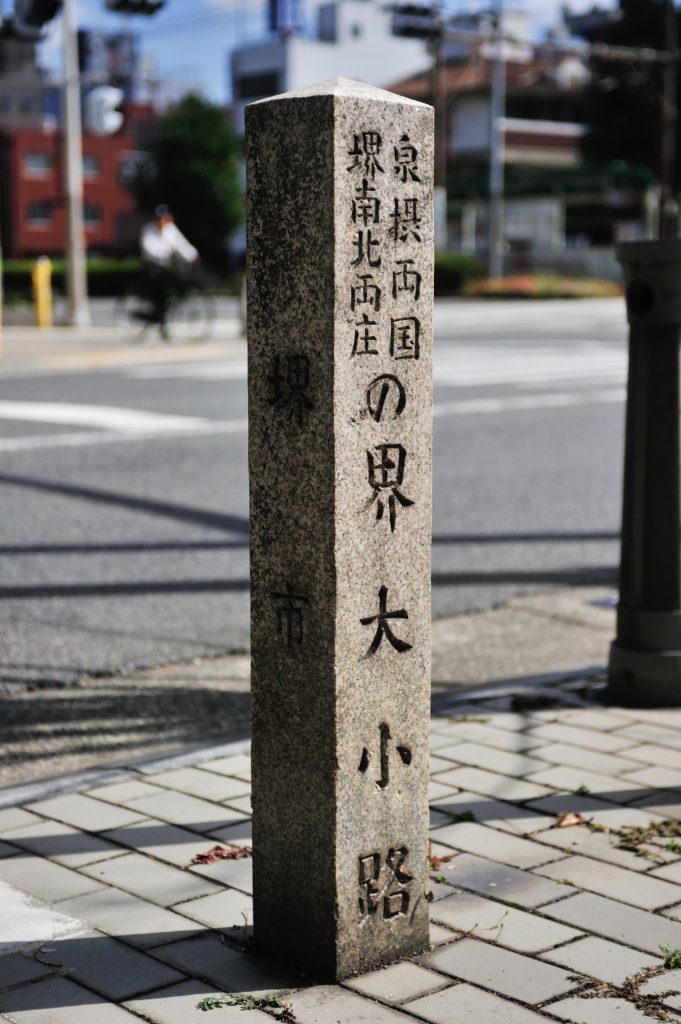 A monument stands at a corner of Oshoji promenade located at the center of Sakai’s old town known as Kango Area, marking the border between Sakai Kita-no-sho in Settsu Province’s Sumiyoshi County and Sakai Minami-no-sho in Izumi Province’s Oshima County.
A monument stands at a corner of Oshoji promenade located at the center of Sakai’s old town known as Kango Area, marking the border between Sakai Kita-no-sho in Settsu Province’s Sumiyoshi County and Sakai Minami-no-sho in Izumi Province’s Oshima County.
Today, Sakai is a government ordinance city with a population of about 808,000 (estimated as of April 1, 2024). Positioned along the railway that connects Kansai International Airport and downtown Osaka, Sakai is accessible in about 30 minutes from Osaka’s city center. With an expressway running through the city and the Port of Sakai-Semboku serving as a hub of international maritime transport, Sakai’s advantage in accessibility via land and sea remains unchanged.
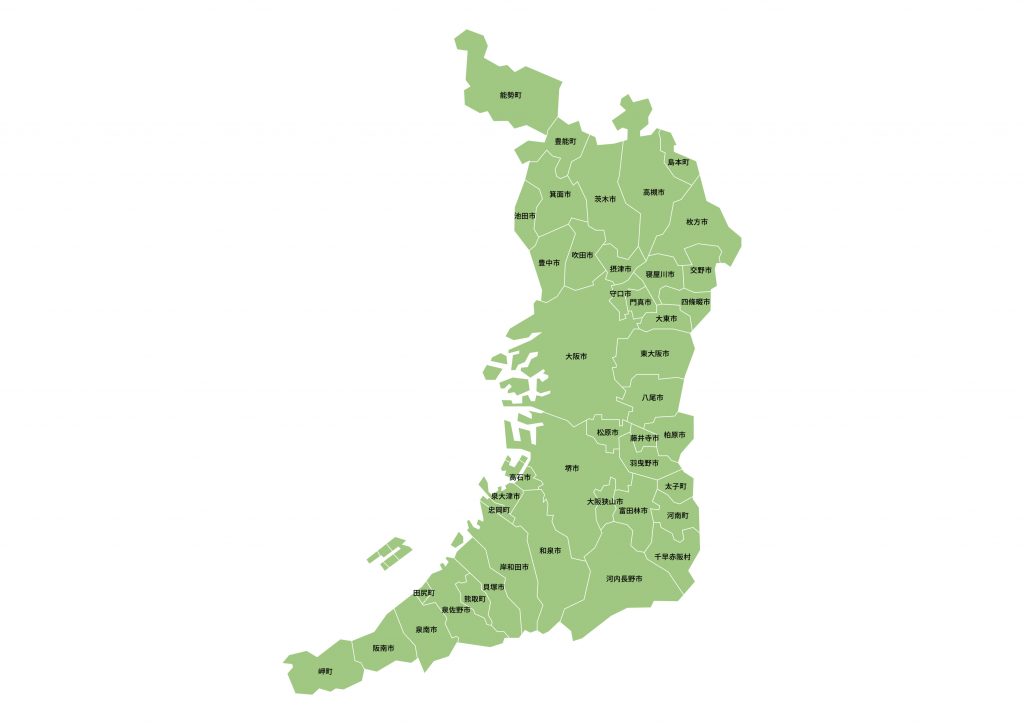
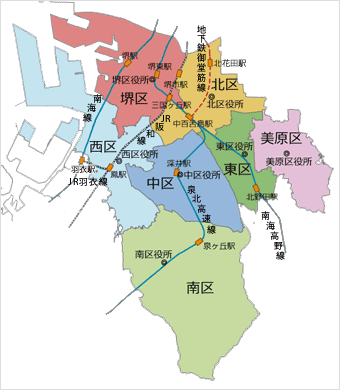
“Old Town,” the area that developed as an autonomous city surrounded by moats since the Middle Ages, is part of today’s Sakai Ward. (Right image) provided by Sakai City.
Osaka’s First World Heritage Site
In 2019, Mozu-Furuichi Kofun Group was registered as Osaka’s first World Heritage Site. Sakai is the site of the Mozu Kofun Group that includes 44 kofun ancient mounds. Among them is the massive Nintoku-tenno-ryo Kofun (Daisen Kofun/Daisenryo Kofun), the world’s largest key-hole shaped tumulus, stretching 486 meters in length. It is also one of the world’s three great ancient tombs, along with the Pyramid of Khufu in Egypt and the Mausoleum of the First Qin Emperor in China.
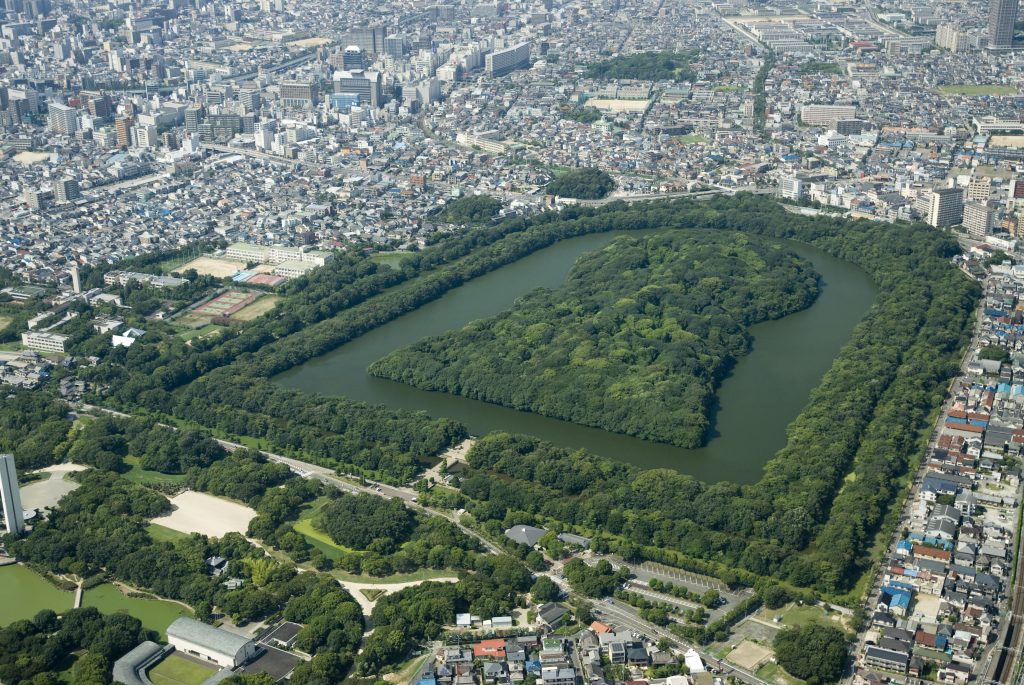 The key-hole shape is the distinct characteristic of Nintoku-Tenno-Ryo Tumulus. Provided by Sakai City.
The key-hole shape is the distinct characteristic of Nintoku-Tenno-Ryo Tumulus. Provided by Sakai City.
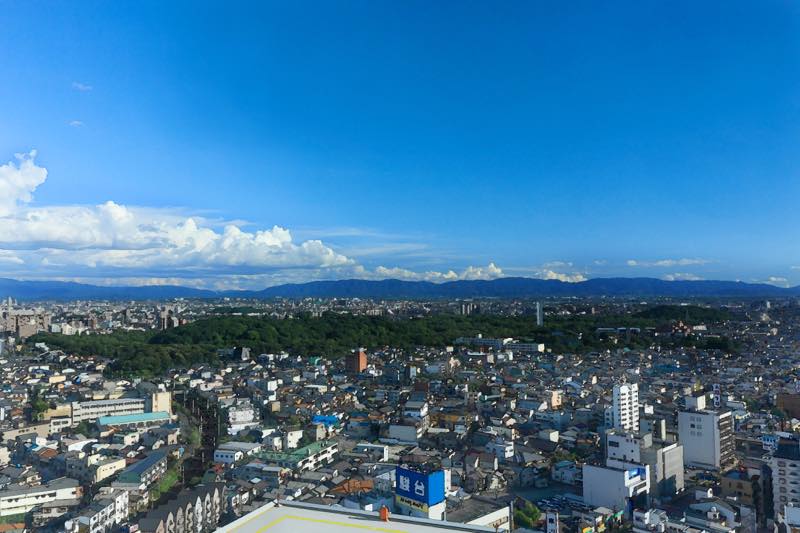 Overlooking Nintoku-Tenno-Ryo Tumulus from the observation lobby on the 21st floor of Sakai City Hall, 80 meters above ground.
Overlooking Nintoku-Tenno-Ryo Tumulus from the observation lobby on the 21st floor of Sakai City Hall, 80 meters above ground.
Large tumuli with over 100 meters in length were constructed one after another, indicating the significance and the sacredness of the area. The ruins of the community of those who constructed kofun have also been discovered.
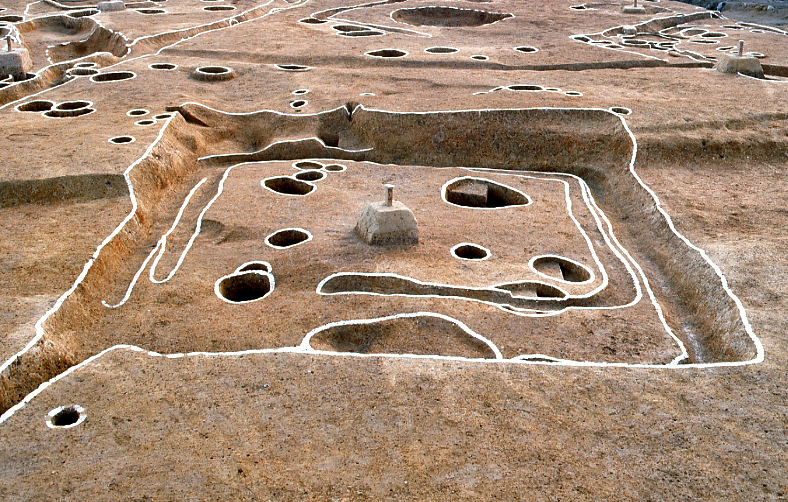 Haze ruins is believed to be the community of those involved in the construction of the Mozu Kofun Group.Provided by Sakai City Cultural Property.
Haze ruins is believed to be the community of those involved in the construction of the Mozu Kofun Group.Provided by Sakai City Cultural Property.
A Seaside Resort of Ohama Park
The name “Sakai” first appeared in the Heian Period when Fujiwara no Sadayori mentioned it as a place for shihoyuami in a collection of poems. Referring to a hot saltwater bath called shioyu, shihoyuami is essentially a bathhouse. Shioyu continued thereafter and, with the construction of an aquarium and a beach at the park during the Meiji Period (1868-1912 CE), Ohama Park became a popular leisure destination for the region. While it closed during World War II, its remains (shioyu family bath) has been reconstructed at Amami Onsen Nanten-en, a ryokan inn in Kawachinagano City, retaining the same appearance as when it was at Ohama Park (as a Registered Tangible Cultural Property architected by Tatsuno Kingo).
 While traces of the popular leisure spot are gone, monkeys thrive in what used to be the monkey mountain at Ohama Park.
While traces of the popular leisure spot are gone, monkeys thrive in what used to be the monkey mountain at Ohama Park.
Another highlight of Ohama Park is the Sakai Oouo Yoichi Festival (literally means “Sakai Big Fish Night Market Festival”) held annually since the Kamakura Period (1192-1333 CE). A dynamic fish auction is the focal point of this summer tradition.
 The fish auction is held at night at the community-based festival with stalls and booths representing local businesses.
The fish auction is held at night at the community-based festival with stalls and booths representing local businesses.
A Center of Trade
While the current Port of Sakai-Semboku occupies a large area encompassing the three cities of Sakai, Takaishi, and Izumiōtsu in a north-south stretch of 14 kilometers, it was the Sakai Port that flourished in trade with the Ming Dynasty and through the Nanban Trade with Spain and Portugal. Developed early as a fishing port, the Sakai Port became the hub of international trade when it was selected as the embarkation and disembarkation port for the envoy to the Ming Dynasty during the Muromachi Period (1336-1568 CE). Sakai’s skilled merchants built their wealth through trades in raw silk and silk products, cotton, perfumes, and pharmaceuticals and advanced the city of Sakai to be the “Venice of the East”.
(More on Sakai’s incense industry here)
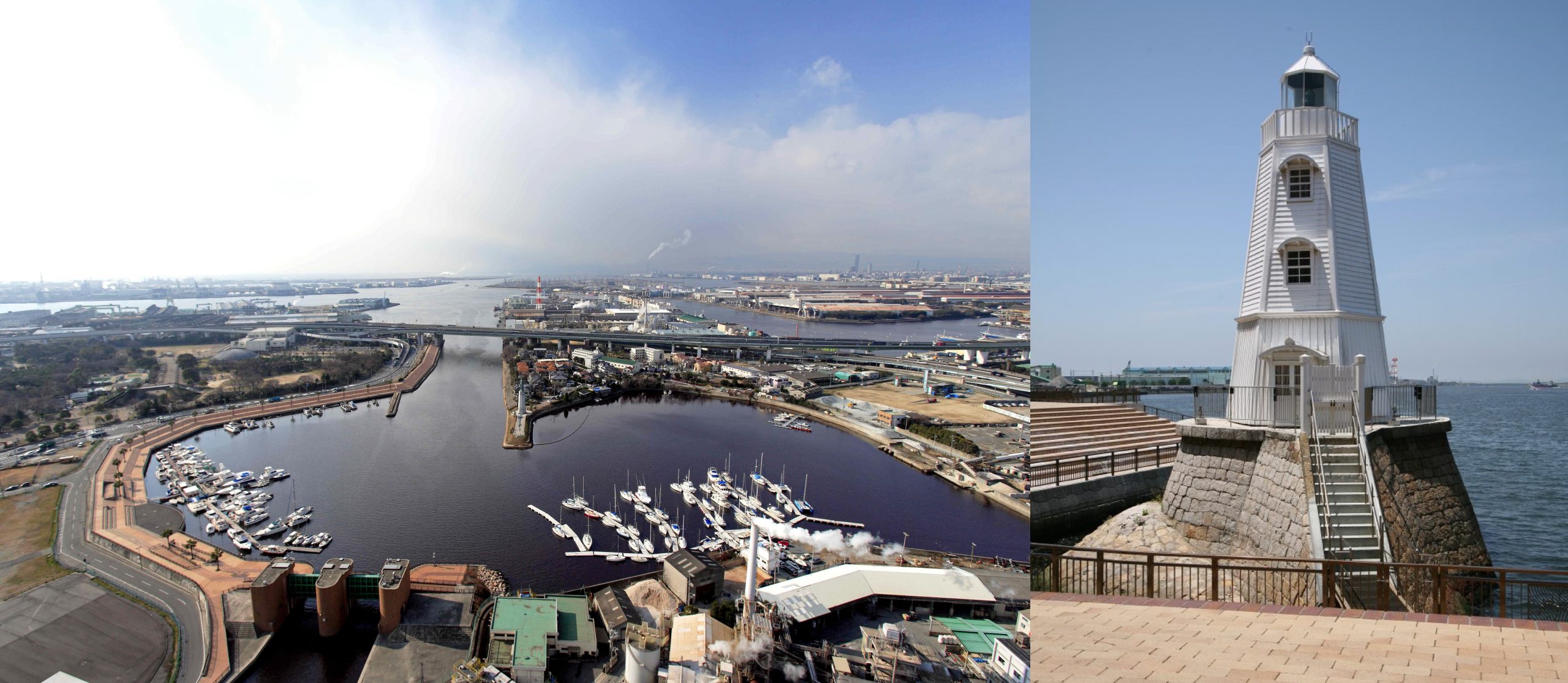 The wooden Western-style lighthouse built at the tip of the old Sakai Port in 1877.
The wooden Western-style lighthouse built at the tip of the old Sakai Port in 1877.
The secret to Sakai’s glorious past also lies with its urban planning strategies. Particularly, moats were built around the city to prevent invasions by warlords and samurai as the city was governed by merchants themselves. Although the moats were eventually filled in by the great warlord Toyotomi Hideyoshi, the merchants regained prosperity and built elegant residences during the Edo Period (1603-1868 CE). Sakai remains a home to numerous machiya townhouses with cultural worth today.
 Built immediately after the Summer Campaign of the Siege of Osaka that burnt down the city, the Yamaguchi Residence is one of the few remaining machiya town houses of early Edo Period. A National Important Cultural Property.
Built immediately after the Summer Campaign of the Siege of Osaka that burnt down the city, the Yamaguchi Residence is one of the few remaining machiya town houses of early Edo Period. A National Important Cultural Property.
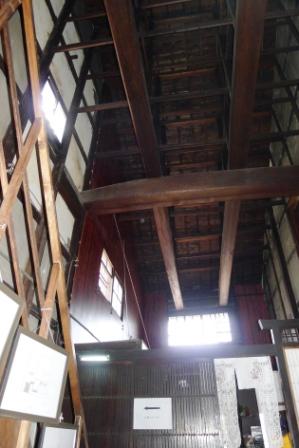 The Uchida Residence featuring an impressive open kitchen ceiling with large beams was built around 1877.
The Uchida Residence featuring an impressive open kitchen ceiling with large beams was built around 1877.
Sakai’s story cannot be told without the mentioning of its firearms and knives. After only a few years after matchlock guns arrived from Tanegashima Island, Sakai became a major producer, helped by its longstanding blacksmithing industry.
(More on Sakai’s firearms and knives here)
As the time progressed and the firearms manufacturing died out, its ironmaking technology was applied to the production of bicycle parts, exercise equipment (such as playground equipment, baseball backstop fence), hand trowels, and such, and Sakai’s excellent craftsmanship has been preserved through them.

The Shimano Bicycle Museum is Japan’s only museum specializing in bicycles.
Great Advancement While Embracing History
One of the special qualities of Sakai is that its historical and cultural heritage remains relatively intact. This is due to the considerable care provided by the citizens of Sakai and is proof that the city has great potential.
In the description of addresses in Sakai, such as “1 cho, Kainochonishi, Sakai Ward, Sakai City”, districts of the town are expressed with “cho” instead of “chome” (except in Mihara Ward that joined Sakai by merger), a term used everywhere else in the country. This exemplifies Sakai residents’ commitment to the history of their proud city where each district historically was an independent “town” and not just a district.
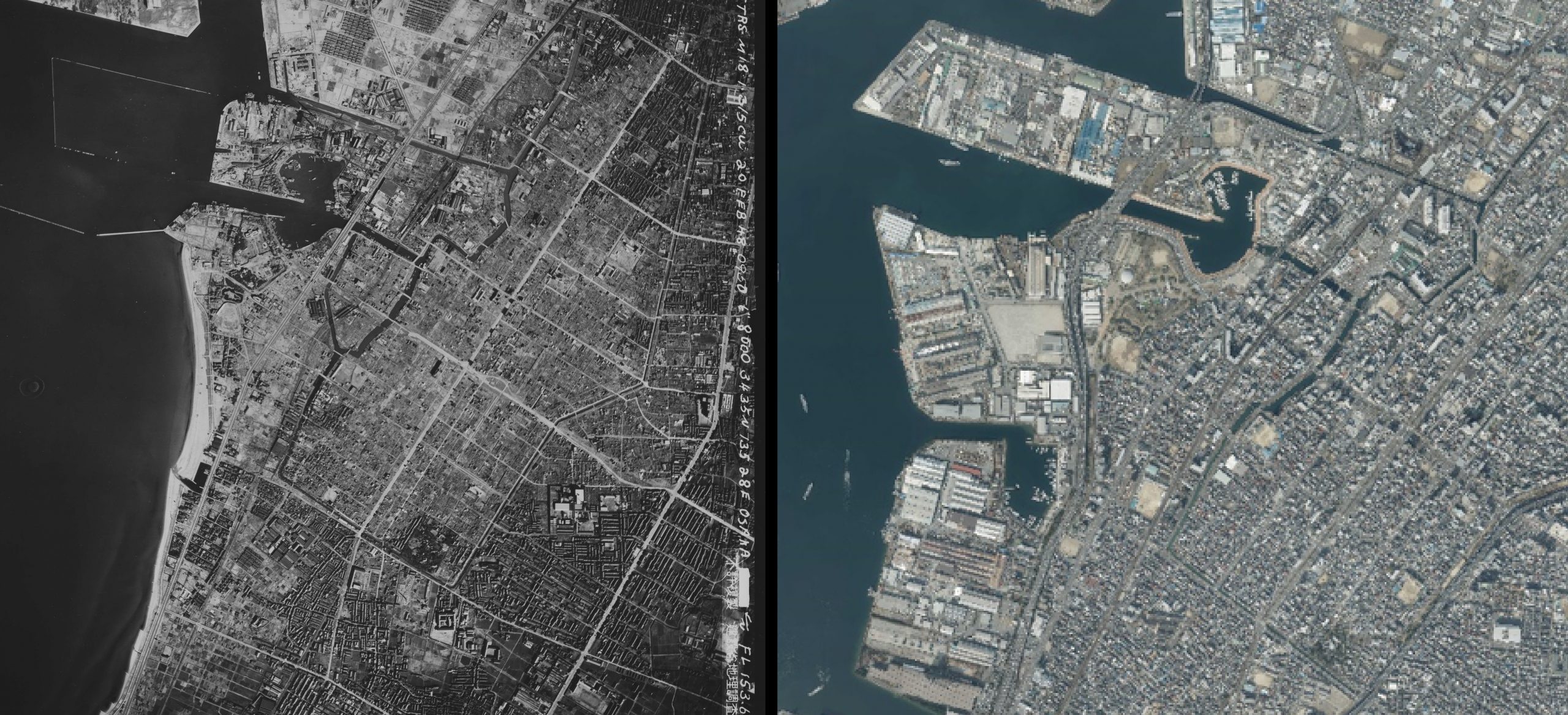 Aerial shots of Sakai City in 1948 (left) and 2022 (right). Earthworks and maintenance services were performed to protect Sakai’s seashore during Japan’s period of rapid economic growth.
Aerial shots of Sakai City in 1948 (left) and 2022 (right). Earthworks and maintenance services were performed to protect Sakai’s seashore during Japan’s period of rapid economic growth.
Source: Official website of the Geospatial Information Authority of Japan
(Left)https://mapps.gsi.go.jp/maplibSearch.do?specificationId=224442
(Right) Created by Sakai Film Commission Executive Committee based on https://mapps.gsi.go.jp/contentsImageDisplay.do?specificationId=1931379&isDetail=true
https://mapps.gsi.go.jp/maplibSearch.do?specificationId=1931378